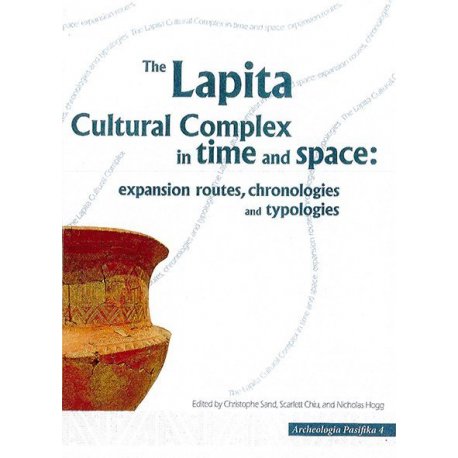
The Lapita Cultural Complex in time and space
expansion routes, chronologies and typologies
9782954167534 LACUL
L'IANCP a créé une nouvelle collection, intitulée « Archeologia Pasifika », mêlant un terme latin à orthographe francisée et un terme générique à orthographe « océanisée ». Cette collection vient remplacer « Les Cahiers de l'archéologie en Nouvelle-Calédonie » publiés par le Département Archéologie depuis 1992.Ce quatrième volume de la collection est en anglais. Il reprend les contributions de neuf chercheurs à la conférence organisée en septembre 2012 à Taïwan par le Centre d'études archéologiques de l'Académie Sinica de Taïwan et l'IANCP. L'objectif principal de cette réunion scientifique était de présenter la dernière version du LPOD (Lapita Pottery Online Database), un programme informatique mis au point pendant les dix dernières années par le Centre de recherches archéologiques du...
Hors stock
Détail produit
| Support | Livre neuf |
| Éditeur | IANCP |
| Genre | Archéologie |
| Date | 2015 |
| Collection | Archeologia Pasifika |
| Format | Format 21,5 x 27,5 cm, relié, couverture rigide, 220 pages |
| EAN 13 | 9782954167534 |
En savoir plus
From the first time it was identified at the beginning of the 20th century in Watom, a small island of the Bismarck Archipelago, the pottery tradition known as Lapita has been characterized by its unique set of geometric, mostly dentate-stamped decorations. The present volume, built around this important cultural period of History of the Pacific, developed out of a research conference organized jointly in September 2012 at Academia Sinica by the Center for Archæological Studies of Academia Sinica in Taiwan and the Institute of Archæology of New Caledonia and the Pacific, entitled International Conference on Cross-regional comparison of ancient migration and exchange patterns. The main scope of this scientific meeting was to present the lastest version of the Lapita Pottery Online Database (LPOD), a computer program painstakingly built over the past decade by the Center for Archæological Studies of the Research Center for Humanities and Social Sciences of Dr. S. Chiu. It was also an opportunity to bring to the fore the lastest results from research conducted in the Pacific Region, and to learn from more advanced projects the multiple possible research directions the LPOD may follow.The post-conference visits to a set of key Taiwanese archæological sites, allowed archæologists from Taiwan and the Pacific to broaden discussions on the Austronesian diaspora, how it impacted the prehistory of the Pacific, and continues to do so in the modern days.As a final follow-up to this conference, a set of nine papers have been collected by the editors for a volume that spans the main themes during the 2012 Taipei conference. Some of these are strongly data-oriented, while others are more theoretical. Together, they give a good overview of the present state of archæological research in the Southwestern Pacific, in which Lapita and its unique intricate designs remain one of the main research topics.
 (
(

 Lettre d'informations
Lettre d'informations